#street pandlehandle
Text

Jimi Hendrix at the Pandlehandle in 1967
📷 By Jim Marshall via Rolling Stone Magazine
#jimi hendrix#jim marshall#rolling stone magazine#music#musician#musica#rock#rock music#singer#rock singer#guitar player#hard rock#acid rock#psychedelic rock#age of aquarius#flowers generation#guitar legend#pandlehandle#street pandlehandle
83 notes
·
View notes
Text
The Hippie Movement
Hippies were an eclectic group. Many were suspicious of the government and rejected consumerist values. “Peace and Love” was their message. The war in Vietnam, the first to be televised, represented everything they despised about the older generation.

Image: Los Angeles, Some 6,000 youths attend a love-in at a park. UPI photo. February 5, 1968
Unlike political revolutionaries, the hippies attempted no seizure of power. Rather, they asked for the freedom to “do their thing”, that is, to create their own social system. They assumed, implicitly, that what they created would be so joyous, so dazzling, so “groovy” that the “straight” would abandon their own “uptight” life for it. They inverted traditional values, rather than making “good” use of their time, they “wasted” it; rather than striving for upward mobility, they lived in voluntary poverty.
On the personal level, the rejection of the conventional social system involved following the dictate of Timothy Leary to “Turn on, tune in, drop out”, hoped to change society by dropping out of it. They had a vision of people grooving together, and they attempted to remove those things which posed barriers, property, prejudice, and preconceptions about what is moral and immoral. The hippies assumed that voluntarism (every man doing his thing) was compatible with satisfying the essential group and individual needs and with the maintenance of a social system in which there was an absence of power differentials and invidious distinctions based on, for example, wealth, sex, or race.
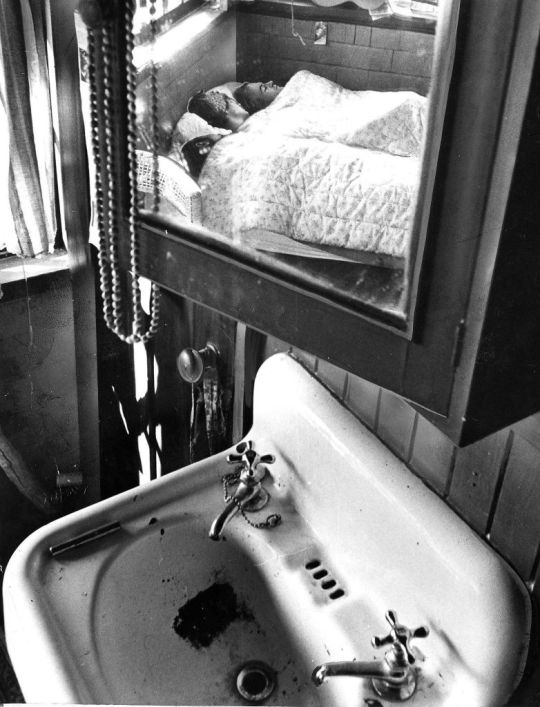
Image: Precursor to the hippie era, beatniks share everything - including beds - with others of their kind. December 30, 1966
Hippies did their own thing but a key part of the hip vision was the generational community. Communalism was present from the earliest days of the counterculture. Several communes founded in the 1950s showed early earmarks of a new, countercultural communal style, but the first commune that could be called full-blown hip was Drop City, founded in 1965 outside Trinidad, Colorado. Originally established as an artists’ community, the intention was to create a live-in work of Drop Art, continuing an art concept they had developed earlier, and informed by “happenings.” As Drop City gained notoriety in the 1960s underground, people from around the world came to stay and work on the construction projects. Inspired by the architectural ideas of Buckminster Fuller and Steve Baer, residents constructed geodesic domes to house themselves, using geometric panels made with automobile tops. It became a prominent landmark in the hip communal scene and lasted through the heyday of the counterculture until its demise in 1973.


Images: Drop City
Sex was an embraced natural biological phenomenon which should be neither denied or repressed. Sexual freedom revolution marked a shift in thinking about sexuality along with a growing acceptance of premarital sex, birth control, public nudity and gay liberation.

Image: Hibiscus dancing with baby around the popular spot in Golden Gate Park known to many as Hippie Hill, San Francisco, 1969. Photographed by Robert Altman
San Francisco gained the reputation of being the hippie capital of the world. The Summer of Love was a social phenomenon that occurred during the summer of 1967, when 100,000 people, mostly young sporting hippie fashions of dress and behavior, converged in San Francisco’s neighborhood Haight-Ashbury. Although hippies also gathered in many other places in the U.S., Canada, and Europe, San Francisco was at that time the most publicized location for hippie fashions.
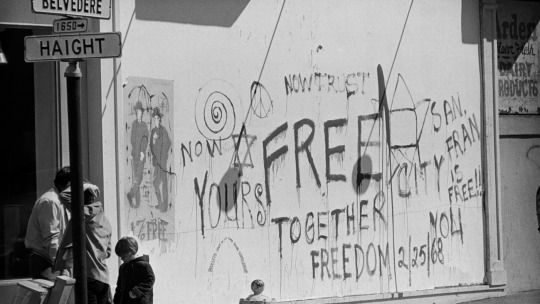
Image: Graffiti at the intersection of Haight and Belvedere Streets in 1968.
Dope
Nothing else was so characteristic of the counterculture as dope. The overwhelming majority of hippies used it, and those who didn’t, approved its use by others.
The use of the term “dope” instead of “drugs” is deliberate. To the hippies, it served to draw a line between substances perceived to be good and those deemed bad. Dope was good; drugs, on the other hand, included both good and bad. Psychedelics were good; speed and downers were bad. Substances that were perceived as expanding consciousness were good; things which made the user dumb were bad.
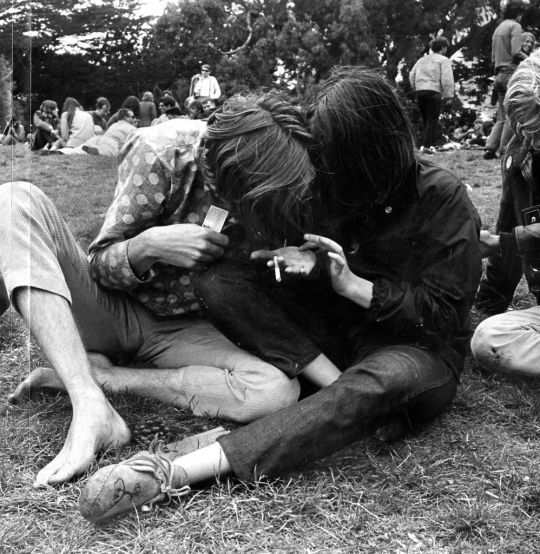
Image: Dope Scene big Business in the Haight. Hippie Hill [Golden Gate Park] turn on. Times-Post Service October 31, 1967
The hippies believed that dope itself had altered the consciousness of millions of individuals in fundamental ways and that that alteration was inevitably a major force in the establishment of the new culture. The goodness of dope was underscored by its medical potential. When hippies began to use dope, some medical researchers were already convinced that it was useful for the treatment of some mental disorders and, in the case of LSD, treatment of alcoholism.
LSD was the most important drug of the actual San Francisco Hippie scene. LSD was mostly used in psychological therapies until in the early sixties, a Harvard teacher called Timothy Leary made it popular among his friends and students. Because of the personal experiences with these drugs Leary and his many outstanding colleagues, Aldous Huxley and Alan Watts believed that these were the mechanisms that could bring peace to not only the nation but the world. They contend that the trip leaves them with a capacity to experience reality with greater intensity and greater subtlety even when not high.
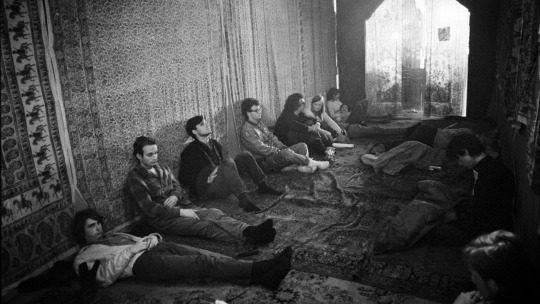
Image: A drug den behind a store front on Haight Street in 1967.
The belief that dope had religious potential was widespread. Hippies took over a big part of the religions of the Far East. They did not adopt a special one, but a mixture of religions like Buddhism and Hinduism. Due to the importance of peaceful living and exploring one’s own mind, they were absolutely ideal for the young people in search for the “real truth”. Dope taking to gain spiritual insights is widespread among the priests of Hinduism so the experiences made by them could be easily compared to those of the LSD-taking flower children. Impressed by the massive psychological effects of the psychedelic, hallucinogenic drugs, they searched for a meaning of these new experiences. Another point that explains the success of those religions among the Hippies is that they were completely new in the USA – only minorities from other countries had practiced them before. The abolition of Christianity by a big number of young people was also a sign of rebellion.

Image: Goa [India] The new choice for hippies. Gemini News Services Sunday Punch June 21, 1987
Music
A key countercultural claim for dope was that it was a great wellspring of creative ideas and action. Writers, musicians, and graphic artists saw dope as inspiring. Much of that creativity was believed to come directly from the dope high but perhaps, even more, was attributed to dope’s carryover effect, the sense that insights gained while high positively influenced later activities. Dope’s impact on music was realized through its influence on composers and musicians, but just as important was its influence on listeners, who of course determine what will survive in the marketplace. Listening to music high wasn’t the same as listening to the same music “straight”.
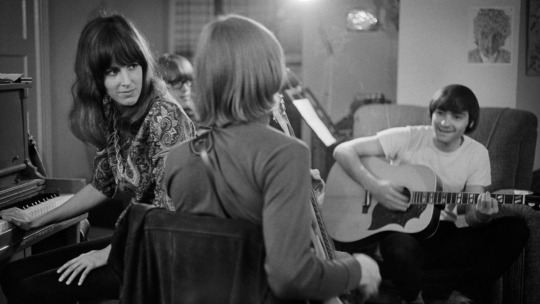
Image: Grace Slick and Jefferson Airplane during a songwriting session, 1967.
The Rock and Roll of the decade before started to merge into a more international, eclectic variant known as Rock. In the early-1960s, Psychedelic Rock, Blues Rock, and Folk Rock were a completely new sound, unheard before. The songs were often written and performed under influence of psychedelics, electrical guitars were the most important instruments. Underground theorists frequent assert that Rock was revolutionary, although there was no consensus about what that meant. For some, it meant that rock could be used by political revolutionaries but the larger revolutionary role of rock lay outside specifically political arenas. It lay in the purported ability of rock to expose the sham of Western culture and to change the life orientation, political and otherwise, of its listeners.

Image: The Grateful Dead's last free concert on Haight Street, 1968.

Image: Jimi Hendrix at the Pandlehandle in 1967.
Rock festivals took an existing phenomenon to a new level of intensity. Festival participants repeatedly emphasized an overwhelming sense of community that provided an impulse for continuing communal experimentation. The definitive festival in this regard was Woodstock, which was held in 1969. Reports on Woodstock in the underground press repeatedly stressed the feeling of unity: “Everyone needed other people’s help, and everyone was ready to share what he had as many ways as it could be split up. Everyone could feel the good vibrations.” The music itself was believed to feed the communal impulse. Over 500,000 people arrived to hear the most notable musicians and bands of the era, among them Richie Havens, The Grateful Dead, The Who, Jefferson Airplane, and Jimi Hendrix. Wavy Gravy’s Hog Farm provided security and attended to practical needs, and the hippie ideals of love and human fellowship seemed to have gained real-world expression.
youtube
Video: Jimi Hendrix - Live at Woodstock: An Inside Look
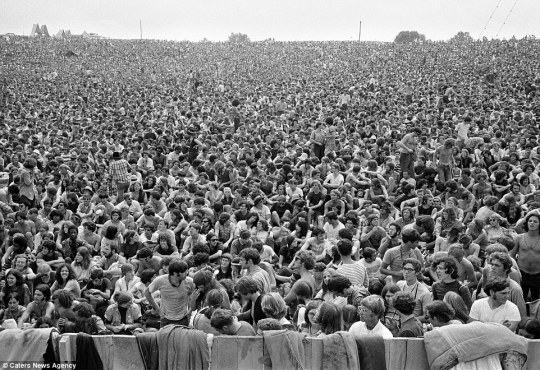

Images: Woodstock by Baron Wolman
References
Braunstein, P.; Doyle, M., 2002. Imagine Nation: The American Counterculture of the 1960s and '70s. Psychology Press.
Blauvelt, A., 2015. Hippie Modernism. Aesthetic Radicalism and the Counterculture.
Goffman, K.; Joy, D., 2007. Counterculture Through the Ages: From Abraham to Acid House. Random House Publishing Group.
Howard, J., n.d. Annals of the American Academy of Political and Social Science: The Flowering of the Hippie Movement. Sage Publications, Inc. .
Miller, T., 2012. The Hippies and American Values. Univ. of Tennessee Press.
3 notes
·
View notes